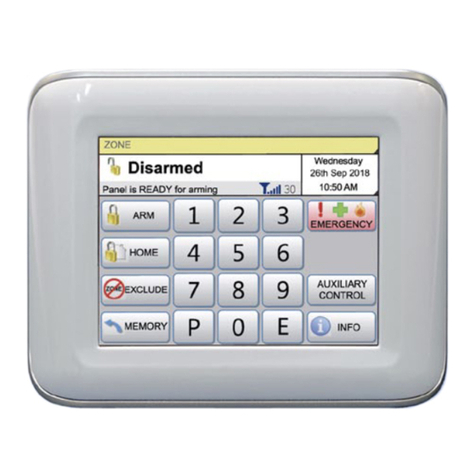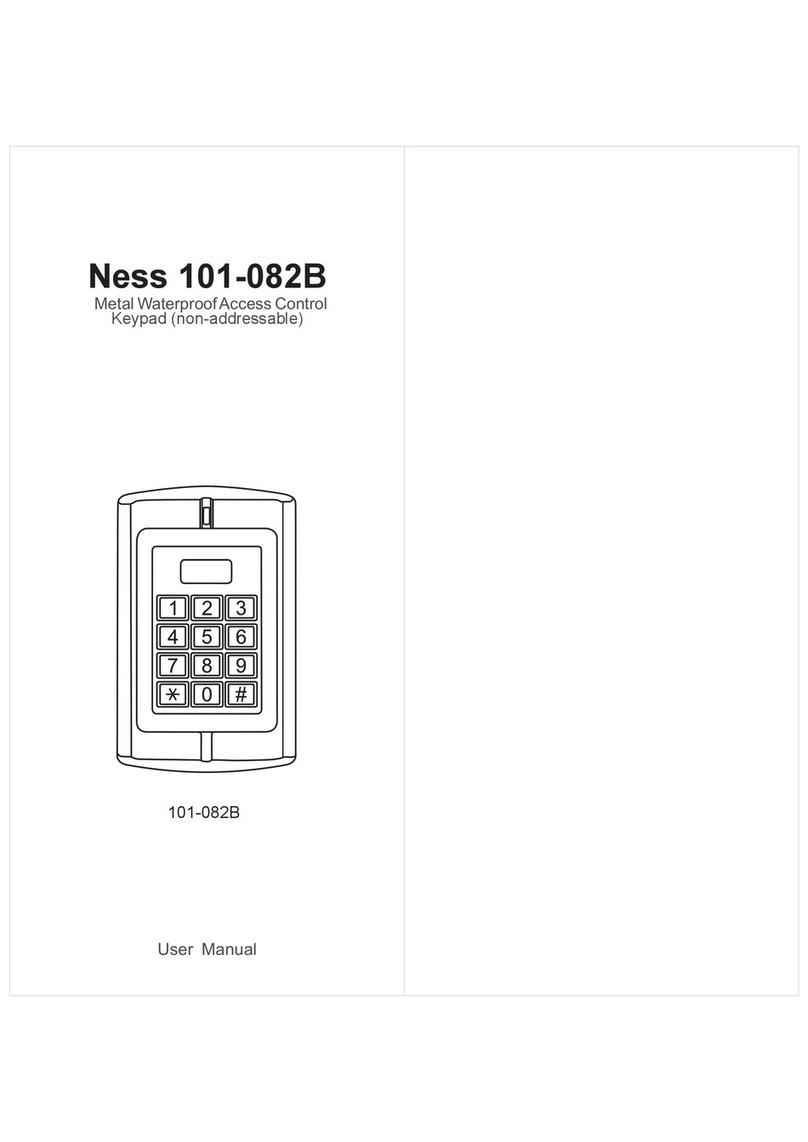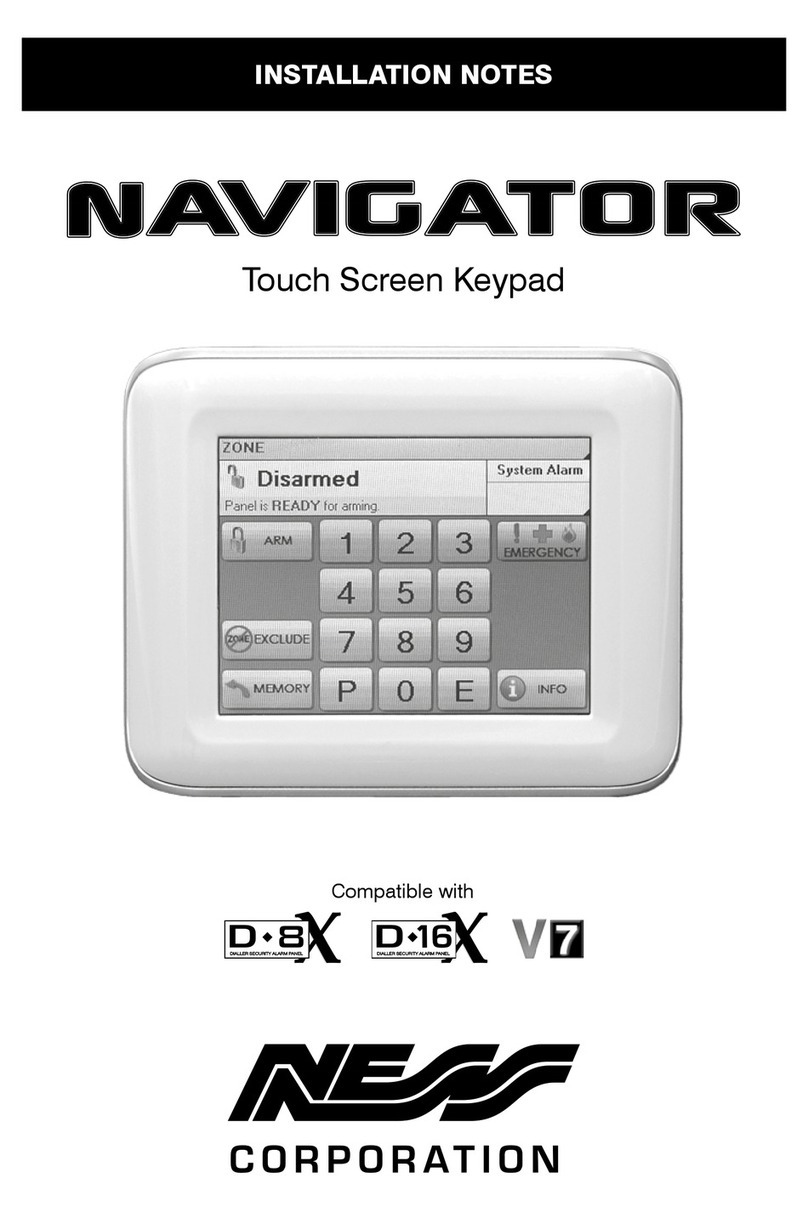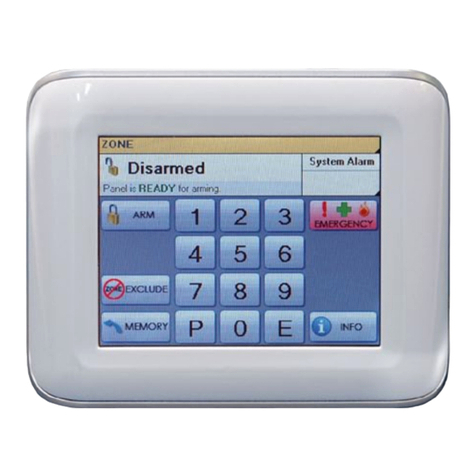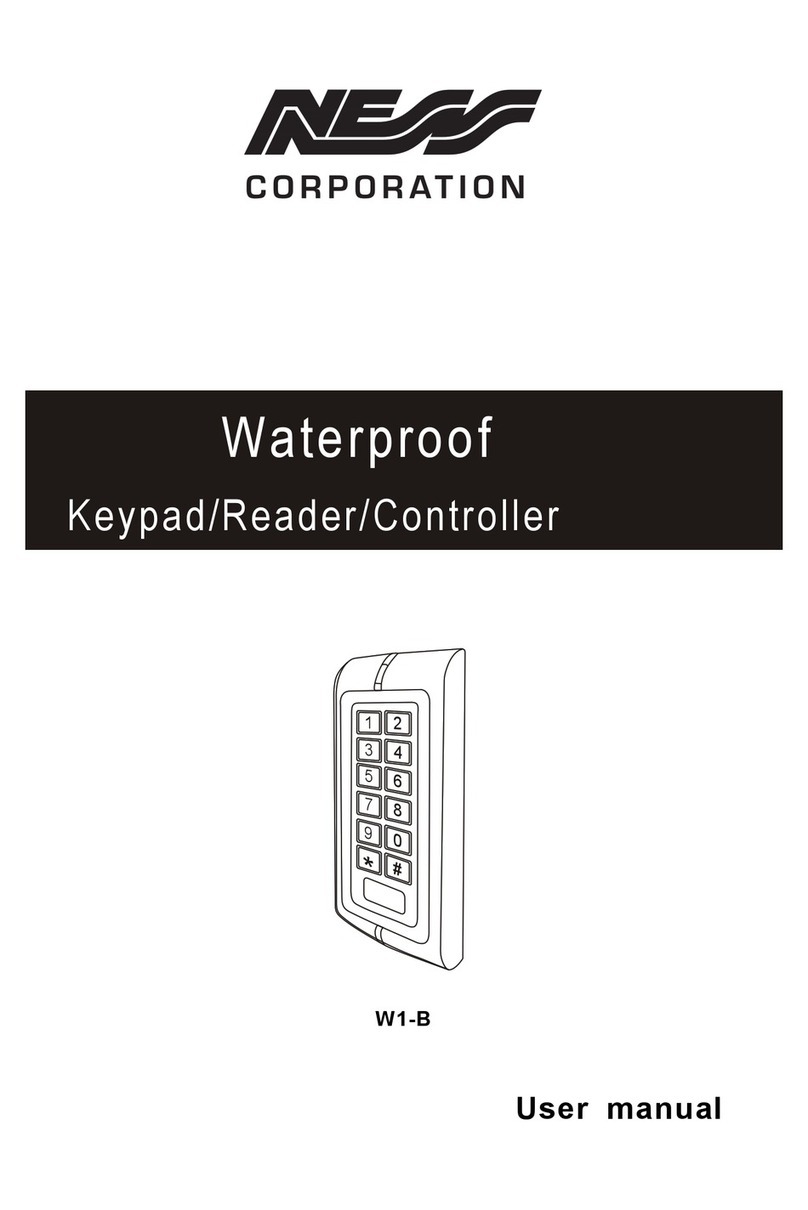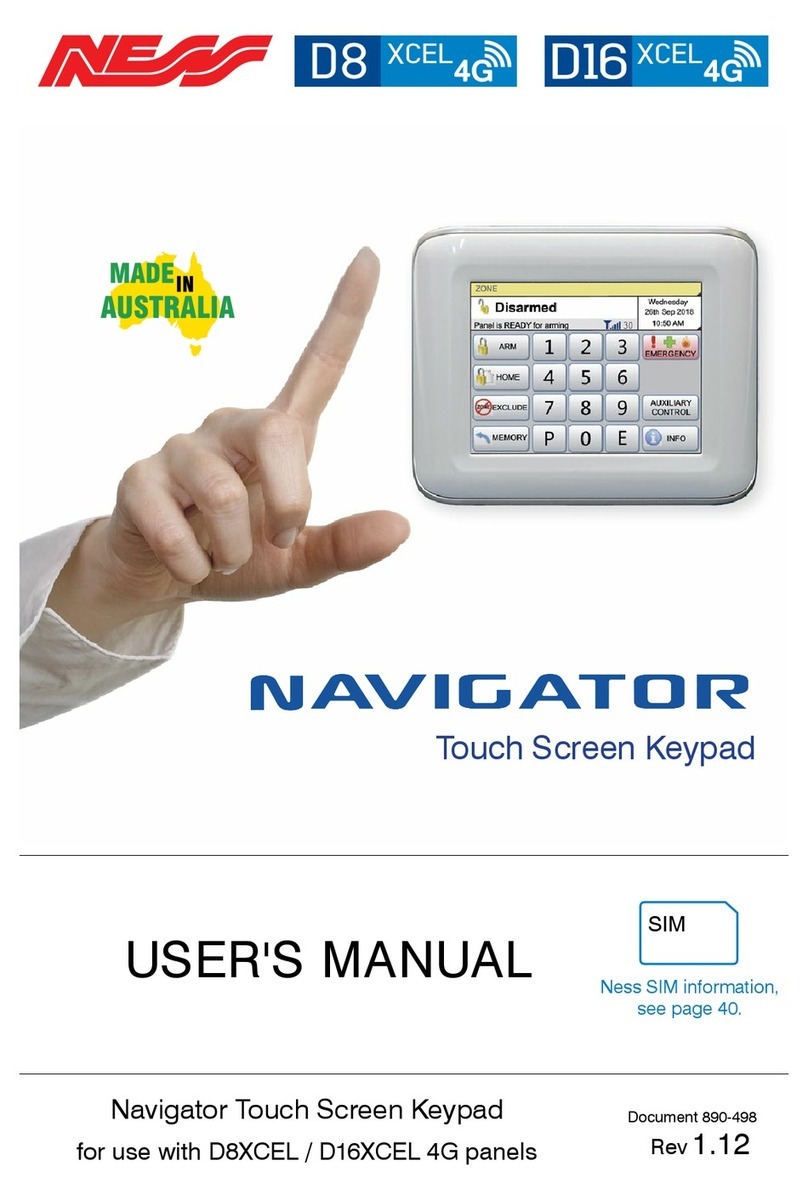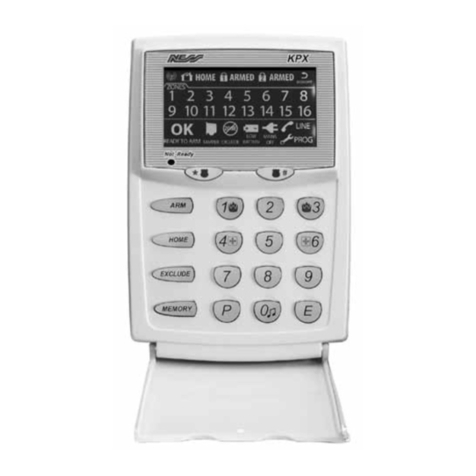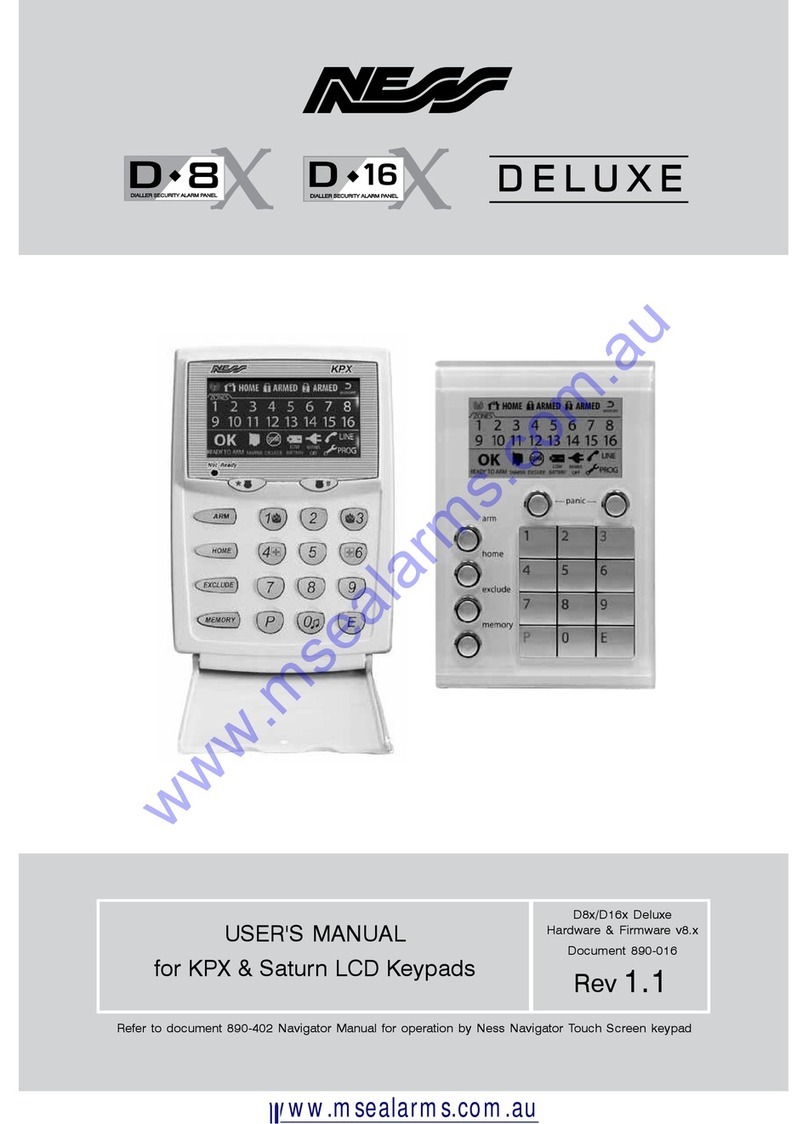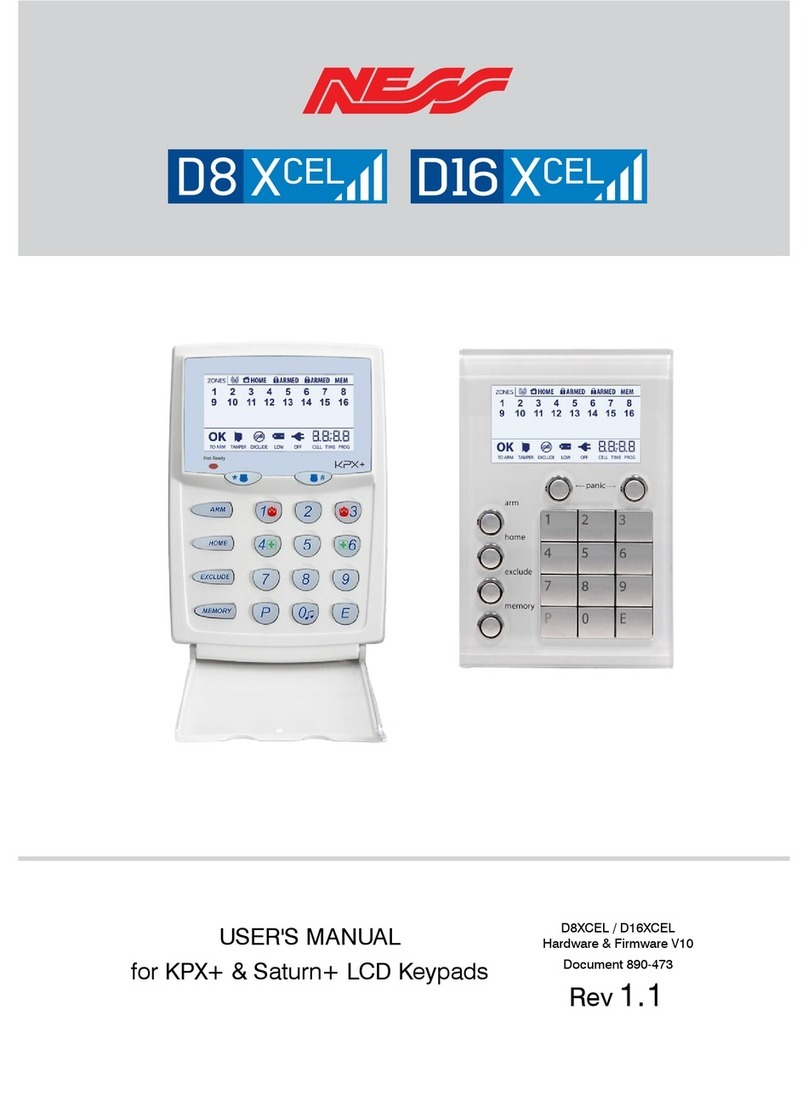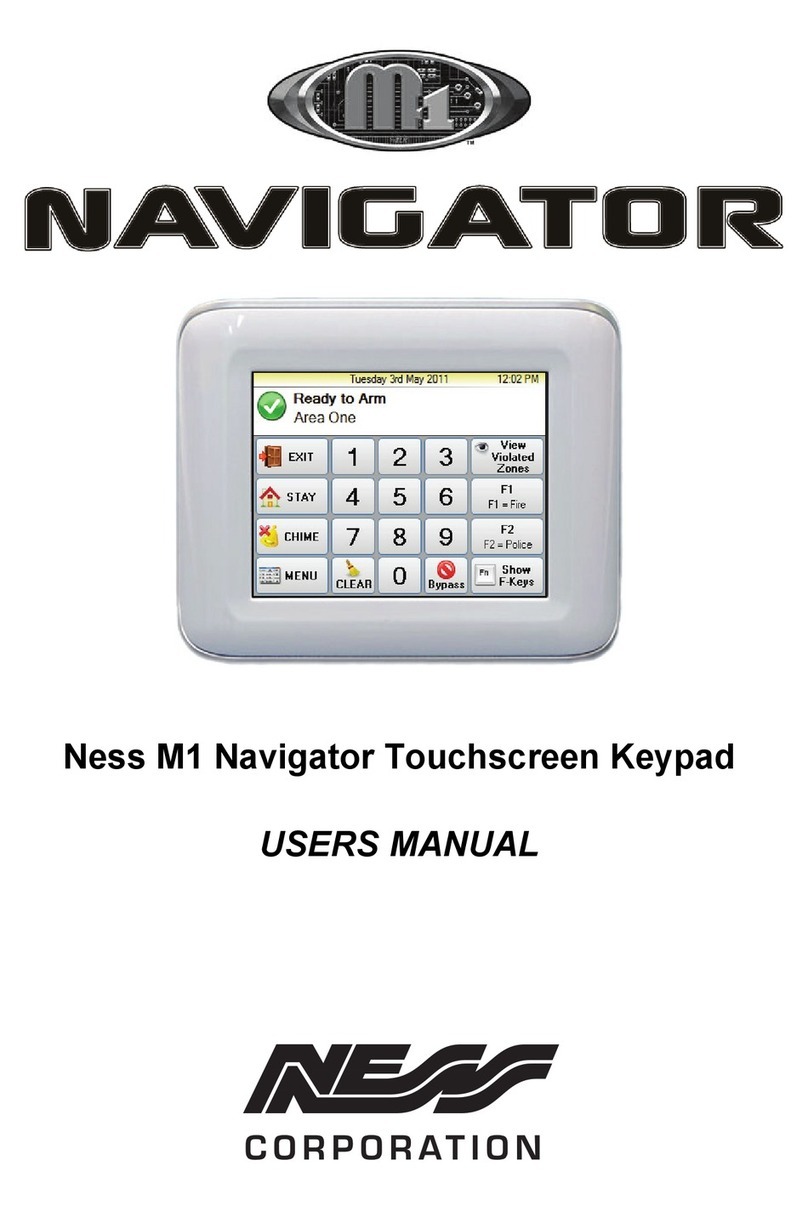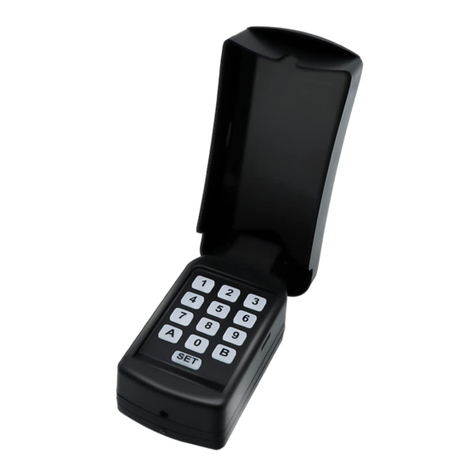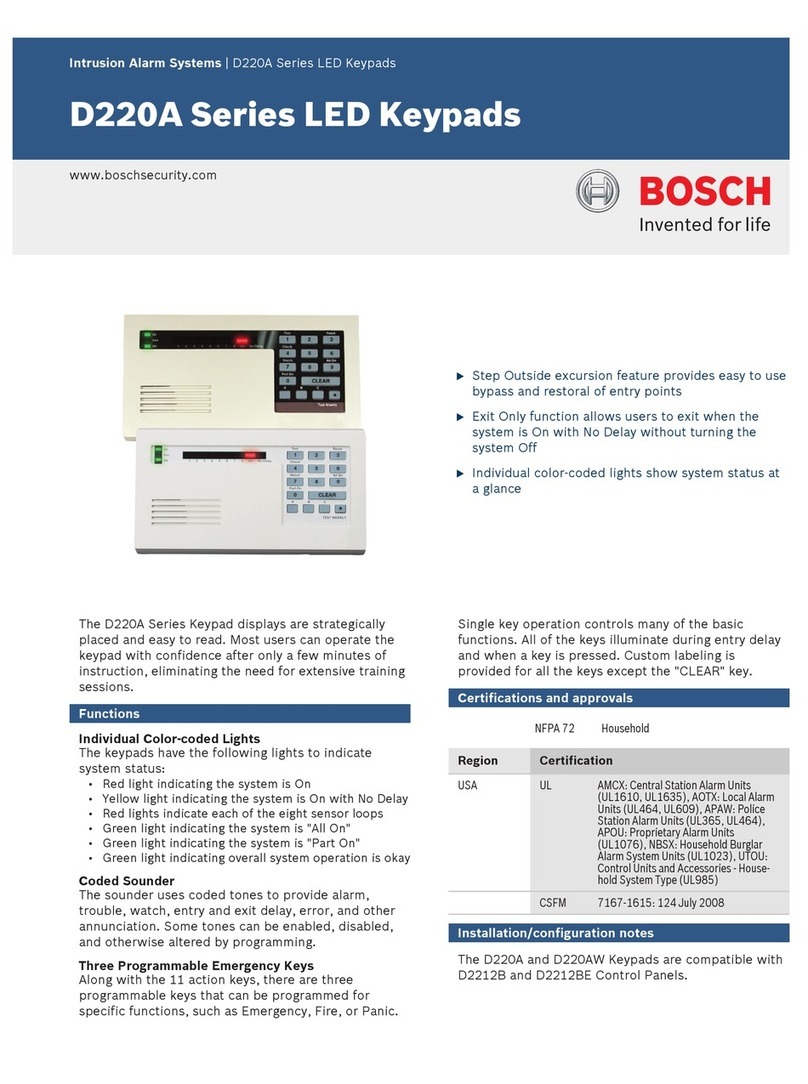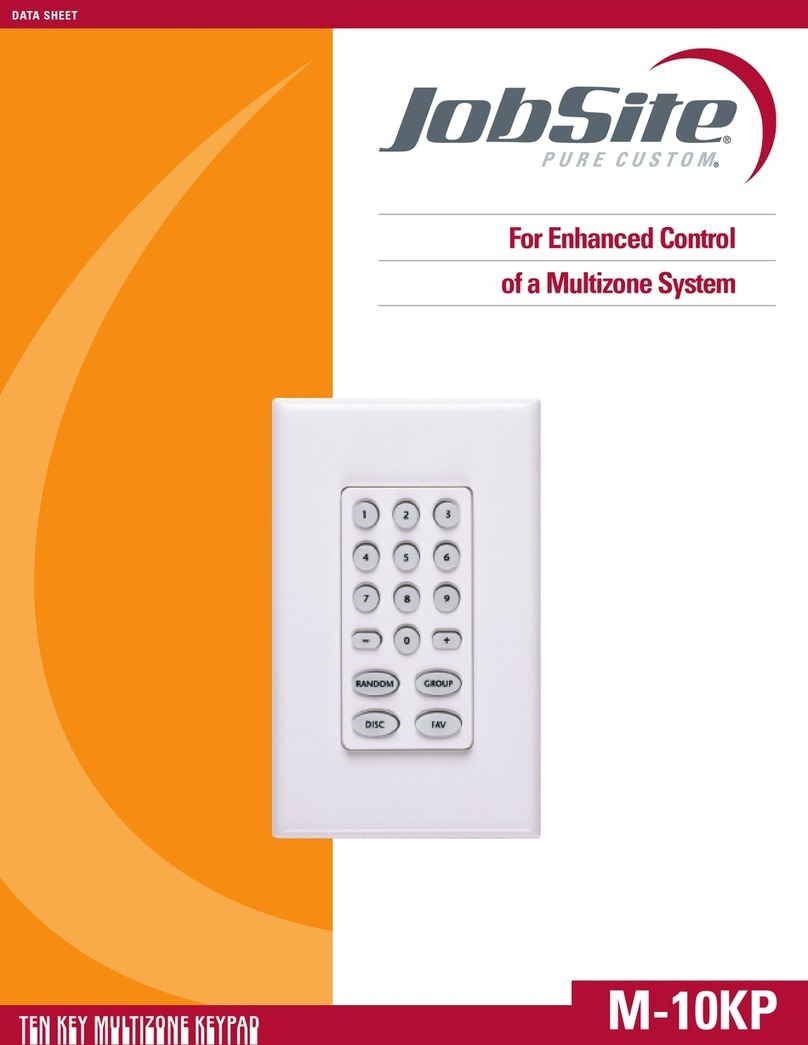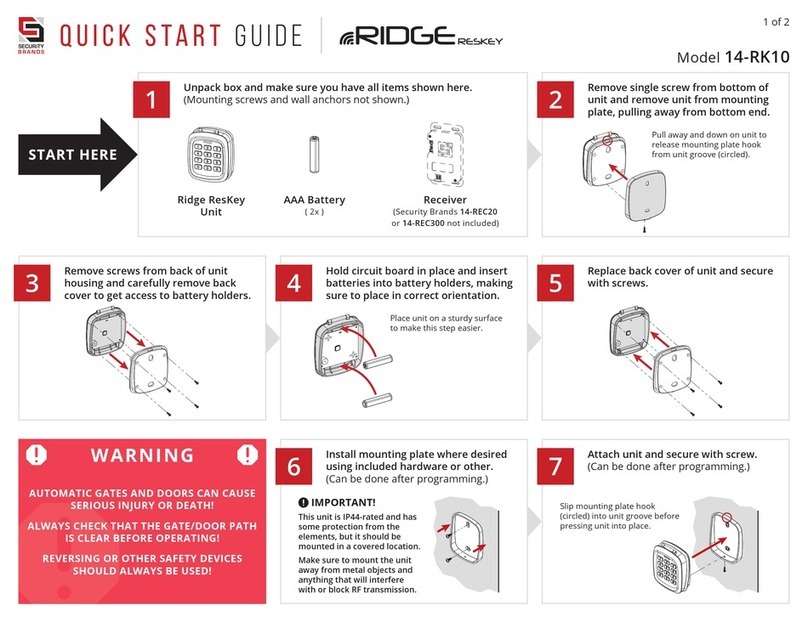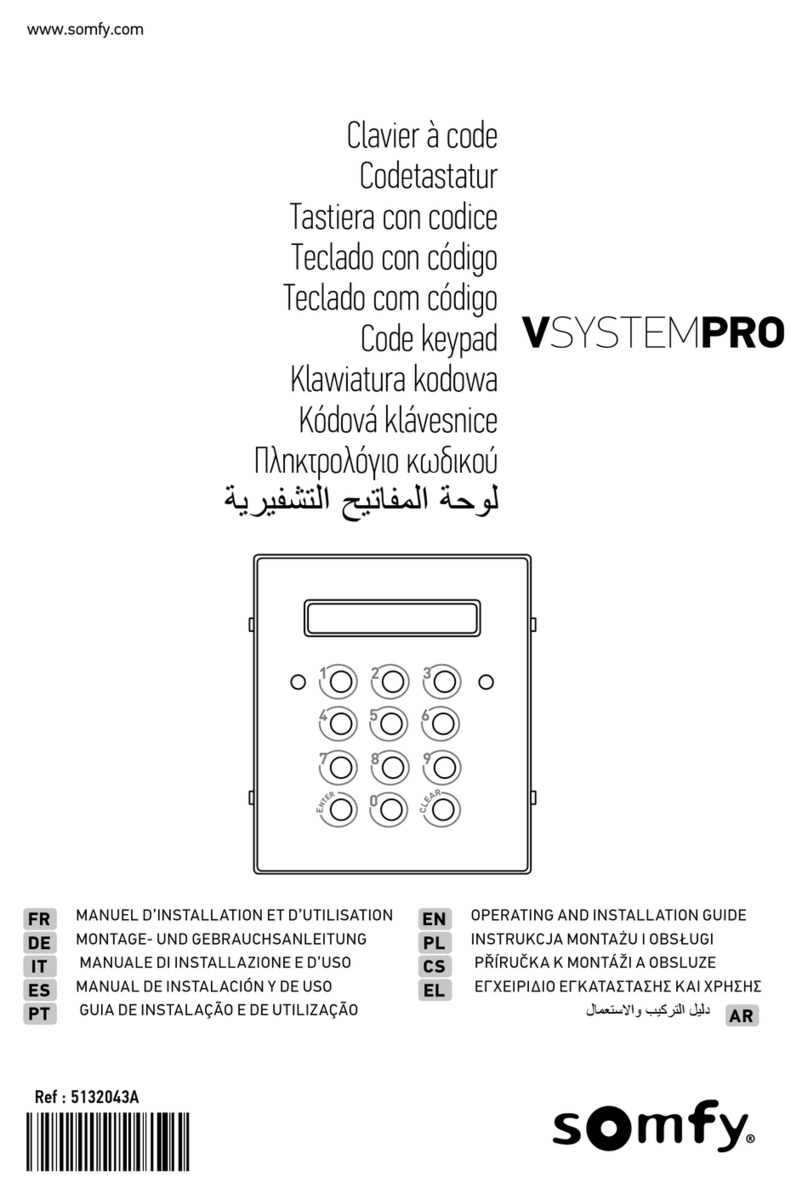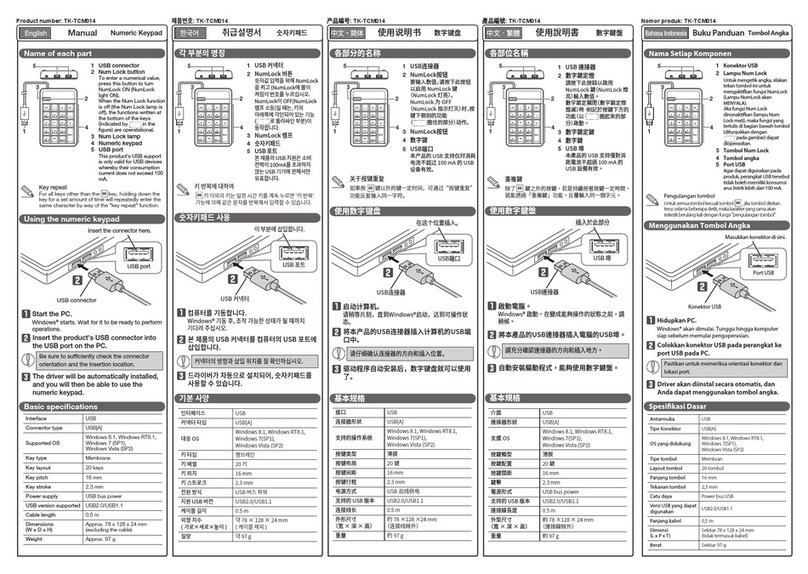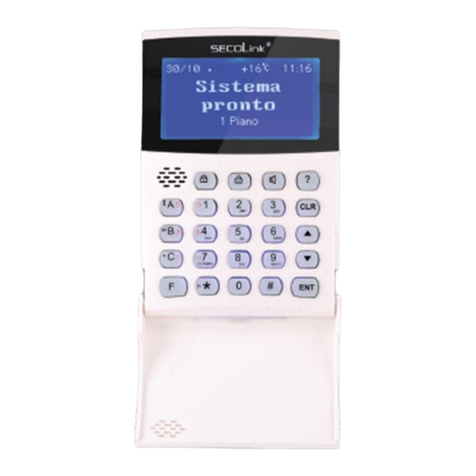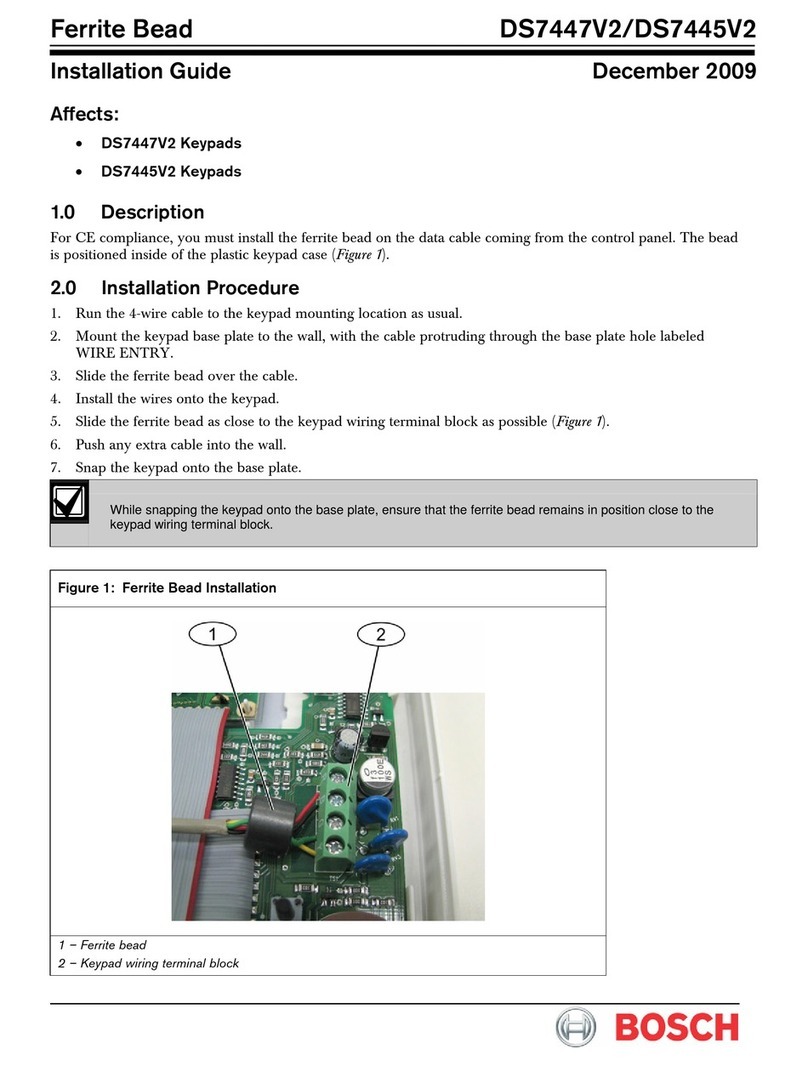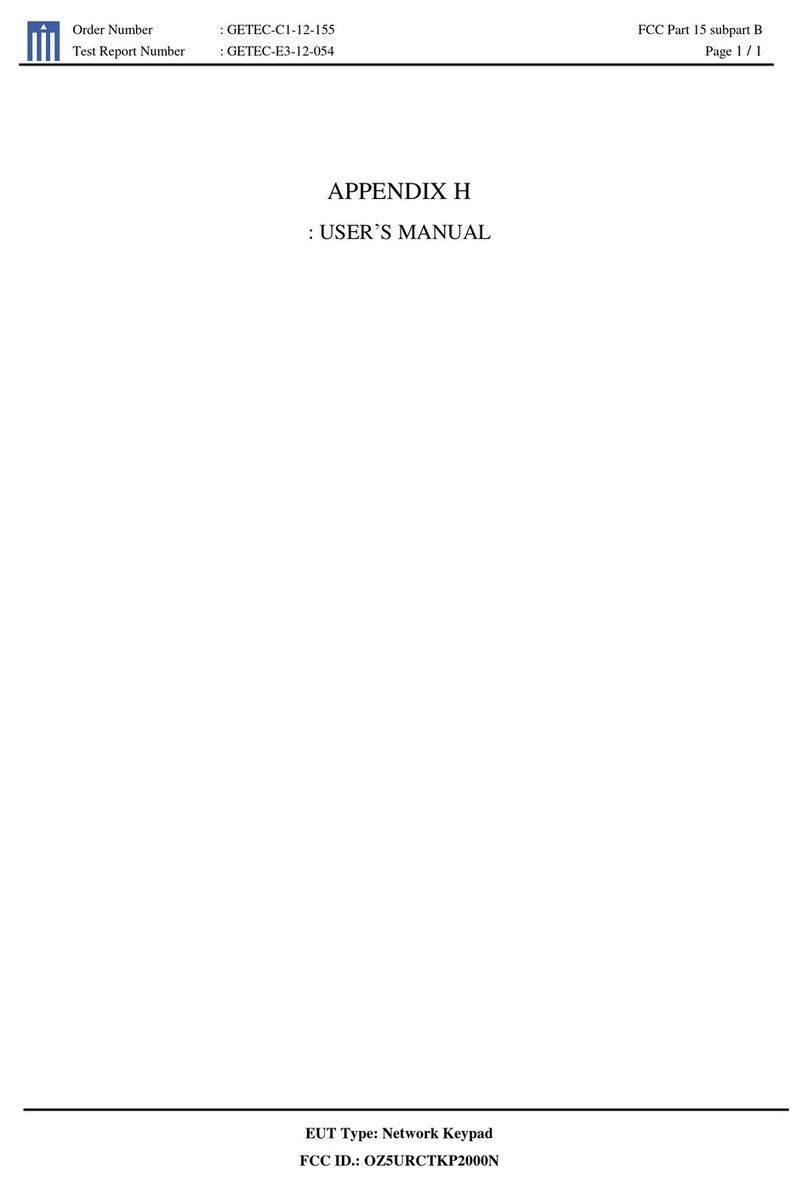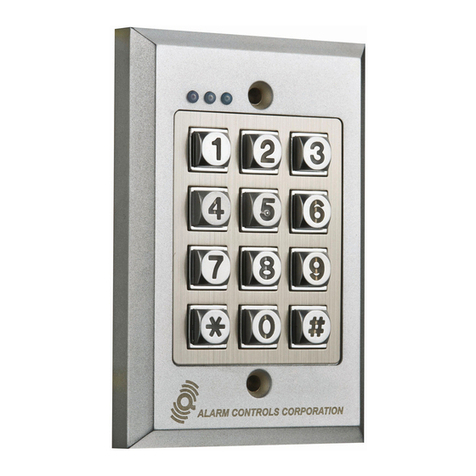Ness RKP User guide

1
Installer ManUal
REV 5.1
Ness Radio Keypad – Installation and Programming Manual
N E S S RADIO KEYPAD
RKP
RADIO KEYPAD

2
RKP RADIO KEYPAD INSTALLATION &
PROGRAMMING MANUAL
Document Part No: 890-276
For the product 100-001 Radio Keypad
N55
Innovative Electronic Solutions
www.ness.com.au
WARNINGS & NOTICES
Ness Corporation manufacturing processes are accredited to ISO9001 quality standards and all possible care and
diligence has been applied during manufacture to ensure the reliable operation of this product. However there are
various external factors that may impede or restrict the operation of this product in accordance with the product’s
specification.
These factors include, but are not limited to:
1. Erratic or reduced radio range (if radio accessories are installed). Ness radio products are sophisticated low
power devices, however the presence of in-band radio signals, high power transmissions or interference caused
by electrical appliances such as Mains Inverters, Wireless Routers, Cordless Phones, Computers, TVs and other
electronic devices may reduce radio range performance. While such occurrences are unusual, they are possible.
In this case it may be necessary to either increase the physical separation between the Ness receiver and other
devices or if possible change the radio frequency or channel of the other devices.
2. Unauthorised tampering, physical damage, electrical interruptions such as mains failure, electrical spikes or
lightning.
3. Solar power inverters are a known source of electrical interference. Please ensure that this product and all
associated cabling is installed at least 3 metres away from a solar power inverter and its cabling.
WARNING: Installation and maintenance to be performed only by qualified service personnel.
CAUTION: Risk of explosion if battery is replaced by an incorrect type. Dispose of used batteries in accordance
with local regulations.
ADSL NOTICE: ADSL broadband data can interfere with the operation of your alarm dialler. It is recommended that
a quality ADSL filter be installed as per the filter manufacturer's guidelines in premises with an alarm dialler installed.
Ness Corporation Pty Ltd ABN 28 069 984 372
Private Bag 23 Seven Hills NSW 1730 Australia
Ph +61 2 8825 9222 Fax +61 2 9838 8508
Email: [email protected]
SYDNEY
MELBOURNE
BRISBANE
PERTH
ADELAIDE
COPYRIGHT NOTICE
All rights reserved. No part of this publication may be reproduced, transmitted or stored in a retrieval system in any form or by
any means, electronic, mechanical, photocopying, recording, or otherwise, without the prior written permission of Ness.
Ness reserves the right to make changes to features and specifications at any time without prior notification in the interest of
ongoing product development and improvement.
© 2012 Ness Corporation Pty Ltd ABN 28 069 984 372

3
The Ness Radio Keypad (RKP) is a wireless,
battery operated keypad designed for use with
any Ness control panel which is compatible
with the 100-200 Radio Interface.*
The RKP can also be used with other Ness
receivers such as the 100-666 Ness MCR
and the 100-187 Ness 1 Channel Standalone
Receiver.*
The Radio Keypad provides remote control of
Arming, Disarming, Monitor (Home) modes and
Panic facility.
Up to 15 User Codes can be programmed in
the RKP. The ID for each code can be mapped
to a compatible Ness control panel to report
Arming/Disarming by User ID.
IntroductIon
RKP
RADIO KEYPAD
PANIC buttons
“”lightLow Battery
“Valid” light
ARM button
HOME button
AUX 1 button
AUX 2 button
PROGRAM button
Protective flap not shown
ENTER button
90mm
135mm
In addition, the AUX 1 button can be
programmed to drive AUX 1 output at the
control panel and AUX 2 can be used with the
MCR receiver.
When used with a compatible Ness control
panel and Radio Interface, the RKP can be used
alongside Radio Keys and hardwired keypads.
Ness Radio Keypads can be:
Fixed - used in place of hardwired keypads in
cases where it is not practical to run cables
Portable - carried from room to room, kept in a
vehicle, bedside table.
* Receivers are sold separately.

4
Beeper
Battery compartment
9V Lithium
RKP BODY REAR
• UncliptheRKPbodyfromthebackhousing
by pushing the top clips down with a small
screwdriver and pulling the RKP body
forward.
• If the RKP is being wall mounted; screw
the back housing to the wall using the four
mounting holes provided.
• Atthisstage,theRKPbodycanbehandheld
to insert the 9V battery as part of the powering
up process.
• Re-attach the RKP body
to the back housing by
first engaging the bottom
clips and swinging the top
closed. Push hard to ensure
the top clips engage.
InstallatIon
The RKP is powered by a 9V Lithium battery.
Battery life is approximately five years under
normal conditions and use.
Power suPPly
The RKP is compatible with:
Ness Radio Interface (100-200)
Used with Ness control panels D8, D16 & D24.
Ness Standalone Receiver (100-187) and
Ness MCR multichannel Receiver (100-666)
Used with Ness 5000 series, PRO-L, PRO-LD,
PRO-LX, L8 and other control panels that can
be armed/disarmed by a momentary contact
closure.
comPatIbIlIty
The keys are LED backlit. Backlighting turns
on when any key is pressed and, to conserve
power, turns off 5 seconds after the last key is
pressed.
backlIghtIng
ANY KEYPRESS
1 beep
VALID COMMAND
3 beeps
ERROR
1 long beep
VALID LOW
BATTERY
OFF Normal Normal
ON User Pogram
Mode
Option Enabled
(In Installer
Program mode)
FLASHING Installer
Program Mode
RKP battery
is low
1 FLASH Valid Signal
Transmitted
keyPad beePs
keyPad lIghts

5
PANIC
To transmit a Panic alarm, press
[together]
or followed by (if P62E 4Eis enabled).
(The Panic Alarm is transmitted as RKP User
Code 1).
AUX 2
Press AUX 2 E
The AUX 2 button transmits a 4th Button signal
on User Code 2.
This function is only suitable for the Ness MCR
receiver.
AUX 1
Press AUX 1 E
The AUX 1 button transmits a 4th Button signal
on User Code 1.
This function can be used to operate the AUX 1
output on D8/D16 panels.
ARMING
Press ARM [CODE] E
or shortcut ARM E (if P62E 5E is enabled).
(Shortcut Arming is transmitted as RKP User
Code 1).
DISARMING
Press [CODE] E
(Five incorrect attempts to Disarm will transmit a
Panic Alarm as RKP User Code 1).
HOME MODE
To arm the control panel in Home (Monitor)
mode.
Press HOME [CODE] E
or shortcut HOME E (if P62E 3E is enabled).
(Shortcut Home Mode is transmitted as RKP
User Code 1).
oPeratIon
Programming the Control Panel
(D8x/D16x)
P69E 5E must be ON for Home (Monitor)
Mode to work on the D8x/D16x.
Programming the Control Panel
(D8x/D16x)
P122E 3E or 4E must be on to enable Aux 1

6
tyPIcal system
user code maPPIng oPtIons
Hardwired Keypad/s (max. 3)
RADIO
KEYPAD
RADIO
KEYS
(Maximum 55 Radio Keys or Radio
Keypads.)
RADIO INTERFACE
(100-200)
D8X/D16X CONTROL PANEL
SEND USER IDS DISABLED
P09E, 0E = OFF (Factory default)
(When programming, Low Battery light = OFF)
RKP
CODES
PANEL
CODES
SEND USER IDS ENABLED
P09E, 0E = ON
(When programming, Low Battery light = ON)
RKP
USER 1
To any
panel user
code slot
ALL USER CODES ARE TRANSMITTED AS USER 1.
Note 1: Only RKP User ID 1 needs to be 'learned' by the
panel. It can be learned to any panel user slot from 2–56.
Note 2: The control panel user code 1 is always a
keypad code.
D8x/D16x Control Panel
RKP
CODES
PANEL
CODES
D8x/D16x Control Panel
ALL USER CODES ARE INDIVIDUALLY TRANSMITTED.
Note 1: All RKP User IDs must be individually 'learned'
by the panel.
Note 2: The control panel user code 1 is always a
keypad code.

7
PROGRAMMING OPTIONS
The RKP program options on page 12 in the
Ness Radio Keypad.
These options are not to be confused with
similar program options stored in Ness control
panels.
USER PROGRAM MODE
User Program Mode allows the owner to
program User Codes 1–15.
TO ENTER USER PROGRAM MODE:
P [Master Code] E
‘Valid’ light will turn on.
INSTALLER PROGRAM MODE
Installer Program Mode allows the installer to
program all options.
TO ENTER INSTALLER PROGRAM MODE:
From User Program Mode...
P [Installer Code] E
‘Valid’ light will be flashing.
TO EXIT PROGRAM MODE
From any Program Mode...
P E
‘Valid’ light will turn off.
PROGRAM LIGHTS
In Program Mode, the Valid and Low Battery
lights provide visual indication as follows.
Program options P09E, P10E and P62E.
LOW BATTERY light
ON = The option is ON
OFF = The option is OFF
VALID light
ON = User program mode
FLASHING = Installer Program mode
OFF = Normal operating mode
ProgrammIng the rkP
NOTE: The RKP will automatically drop
out of User or Installer Program Mode to
Operating Mode 3 minutes after the last
key press.
POWER UP DEFAULT:
To default the RKP on power up, insert
the battery while pressing the ARM and E
buttons together.
This resets all options to factory default
values. The RKP will then be in normal
operating mode.

8
PROGRAMMING THE RKP TO THE PANEL
METHOD 1. WITHOUT USER ID
(Individual RKP user IDs are not
sent)
P09E 0E is off (factory default).
To program the RKP to the control panel, first
put the panel in Radio Key ‘learn’ mode (any
user code), then connect the RKP battery. The
RKP sends its Learn Message and the Valid
light will flash once.
Example
Programming the RKP to a D8x or D16x panel.1
CONTROL PANEL (Installer Program mode)
1. Press P256E EXCLUDE E 5E EXCLUDE E
This enables the panel’s user code 56 as a
Radio Code. (You can use any user code
from 2 to 56).
2. Press 1E to prepare user code 56 to accept
a Radio Code.
RKP
3. Insert the RKP battery
or in installer program mode, press P09E 1E.
(Sends the learn message for User Code 1).
The RKP and the control panel are now ready
for use. The RKP will arm and disarm the panel
via the Radio Code programmed.
The panel can now be operated by RKP, its
hardwired keypad and/or additional RKPs or
Radio Keys.
In this example, if the panel is monitored via
dialler by a central station, when the panel is
armed/disarmed by the RKP, (using any RKP
user code), it will report arm/disarm (any RKP
user code) via the panel user ID of 56.
1The control panel must have the Ness Radio Interface
installed. Part Number 100-200.
METHOD 2. WITH USER ID (RKP
User IDs are mapped to panel
codes)
P09E 0E is on.
If you need to send open/close reports with
individual User IDs to the central station, each
RKP User ID needs to be ‘learned’ into the
control panel.
Example
Programming the RKP to a D8x or D16x panel.1
Mapping 14 RKP User IDs to the panel.
CONTROL PANEL (Installer Program mode)
1. Press P242E EXCLUDE E 5E EXCLUDE E
This enables the panel’s user code 42 as a
Radio Code.
2. Press 1E to prepare the user code to accept
a Radio Code.
RKP (Installer Program mode)
3. Press P09E 1E to send the Learn Message
for RKP User ID 1.
Repeat steps 2 & 3 for the remaining user
codes (P242E to P256E). This process is the
same as programming 14 Radio Keys to a D8x
or D16x control panel.
WHAT IS A ‘LEARN MESSAGE’?
A Learn Message includes the full 56 bit
message string which identifies a User ID. The
Learn Message is required to be sent when you
program (or ‘learn’) the RKP to the control panel,
(or Ness standalone receiver).
HOW TO SEND A ‘LEARN MESSAGE’
From power-up:
Insert the RKP battery and the Learn Message
for RKP User ID 1 is automatically sent.
Installer Program Mode:
The Learn Message for each RKP User ID 1–15
can be sent individually by pressing P09E 1E,
2E, 3E etc.
Send User IDs (P09E 0E) must be enabled).
The RKP Low Battery light flashes 3 times each
time a learn Message is sent.

9
P09E SEND USER IDS
This option enables the transmission of
individual User IDs to the control panel.
To program, press P09E 0E then press 0E to
toggle the option on and off.
P09E 0E = OFF: User IDs disabled, (Low
Battery light is OFF, factory default).
All the RKP user codes are transmitted to the
control panel as User ID 1.
This is the best option if you do not intend
to send open/close reports with User ID to
the central station. This is also the easiest to
program because only the ID for RKP user code
1 needs to be ‘learned’ by the control panel.
The RKP user code 1 can be programmed to
any panel code except the master code.
P09E 0E = ON: User IDs enabled, (Low Battery
light is ON).
Each RKP user code is individually transmitted
to the control panel, (as User IDs 1–15).
This is used for sending open/close reports with
User ID to the central station.
The User IDs must be ‘learned’ into the control
panel one at a time.
Program oPtIons P10E ENABLE RADIO ENCRYPTION
P10E 0000E: Auto Site Code, (Low Battery light
is ON, factory default).
The Site Code is the encrypted security code
that the RKP transmits to the panel along with
the button press data.
By entering P10E 0000E, the Site Code is
automatically generated when the learn
message is sent to the panel.
P10E [4 digit code Site Code] E: Manual Site
Code, (Low Battery light is OFF).
This option can be used to manually set the
transmitted code. This is only necessary if
multiple RKPs are programmed to the same
panel code.
P11E–P25E USER CODES 1–15
The RKP can be programmed with 15 user
codes of 3–6 digits in length.
User Codes cannot start with the digit 0.
To program a user code:
P [Option No] E [New code] E [New code] E
When programming:
Low Battery light OFF = The code is blank
Low Battery light ON = A code is programmed
To clear a user code:
P [Option No] E 0E 0E
USER CODES / USER IDs DEFINED.
User codes are stored in the RKP and
are not transmitted to the panel.
The panel receives an encrypted
message representing the User ID of the
code being used.
The RKP’s user codes are independent
to the control panel’s user codes.

10
P62E 3E–7E
OPERATION SHORTCUTS
P62E 3E, HOME MODE SHORTCUT.
Enables the use of to enter Home
mode.
To program, press P62E 3E then press 3E to
toggle the option on and off.
P62E 3E OFF: Home Mode shortcut disabled.
(Low Battery light OFF)
P62E 3E ON: Home Mode shortcut enabled.
(Low Battery light ON)
(P62E 7E must be OFF when the RKP is used
with D24 V1.1 and earlier).
P62E 4E, PANIC SHORTCUT.
Enables the use of to send a
Panic alarm.
To program, press P62E 4E then press 4E to
toggle the option on and off.
P62E 4E OFF: Panic shortcut disabled
(Low Battery light OFF)
P62E 4E ON: Panic shortcut enabled
(Low Battery light ON)
(The Panic Alarm is transmitted as RKP User
Code 1).
P62E 5E, SHORTCUT ARMING.
Enables the use of to arm the
panel.
To program, press P62E 5E then press 5E to
toggle the option on and off.
P62E 5E OFF: Shortcut Arming disabled
(Low Battery light OFF)
P62E 5E ON: Shortcut Arming enabled
(Low Battery light ON)
(Shortcut Arming is transmitted as RKP User
Code 1).
P62E 7E, D24 OPTION.
This option sets the radio keypad to emulate a
3 button Radio Key.
It is used to enable the keypad to be used with
panels such D24 V1.1 and earlier that don't
accept 4 button radio keys.
In 3 button mode, the AUX buttons will not
work.
To program, press P62E 7E then press 7E to
toggle the option on and off.
P62E 7E OFF: 3 button operation disabled
(Low Battery light OFF)
P62E 7E ON: 3 button operation enabled
(Low Battery light ON)
(P62E 7E must be ON when the RKP is used
with D24 V1.1 and earlier).
P97E, FACTORY DEFAULTS
Press P97E in Installer Program mode to clear
all options and restore factory defaults.
This also clears all user codes and the installer
code.
P98E, CLEAR USER CODES
Press P98E in Installer program mode to clear
the user codes 1–15.
All codes are cleared. User Code 1 is restored
to 123. The installer code is not affected.
P99E, PROGRAM THE INSTALLER
CODE
The Installer Code can be 3–6 digits in length.
To program the Installer Code:
P 99 E [New code] E [New code] E

11
RKP OPTION DESCRIPTION DEFAULT
P09E 0E Send User IDs 123
P09E 1E-15E Sent Learn Message for codes 1 to 15
P10E Enable Radio Encryption ON
P11E User Code 1 (Master Code) 123
P12E User Code 2
P13E User Code 3
P14E User Code 4
P15E User Code 5
P16E User Code 6
P17E User Code 7
P18E User Code 8
P19E User Code 9
P20E User Code 10
P21E User Code 11
P22E User Code 12
P23E User Code 13
P24E User Code 14
P25E User Code 15
P62E 3E Home Mode Shortcut ON
4E Enable Panic ON
5E Arming Shortcut ON
7E D24 Option OFF
P97E Restore Factory Defaults
(This defaults all options including user codes and installer code)
P98E Clear User Codes 1 to 15
P99E Installer Code 000000
Program oPtIons table

12
sPecIfIcatIons
Dimensions ............................... 90W x 135H x 27D mm (with lid closed).
Compatibility ............................. 100-200 Ness Radio Interface.
100-187 Ness 1ch Standalone Receiver.
100-666 Ness MCR receiver.
Keypad functions ...................... Arming by User ID
Disarming by User ID
Home mode
Panic alarm
Aux 1 (to D8 & D16 panels)
Aux 2 (to MCR Receiver)
Audible indicator ....................... Onboard beeper for feedback: keypress, valid command, error.
Visual indicators ....................... VALID LED: indicates program modes, valid signal.
LOW BATTERY LED: indicates RKP low battery, option enabled (pro-
gram mode).
Battery ....................................... 9V Lithium (Ultralife U9VL)
Quiescent current draw ............ 11µA
Radio transmitter....................... SAWR stabilised
Radio frequency........................ 304MHz
Transmit power.......................... 100µW PEP
When used with
the 100-200 Radio
Interface
Table of contents
Other Ness Keypad manuals
Popular Keypad manuals by other brands
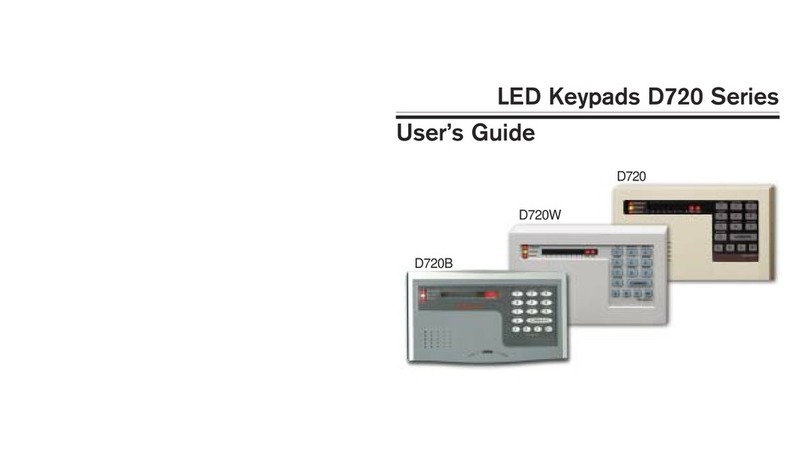
Bosch
Bosch D720 user guide
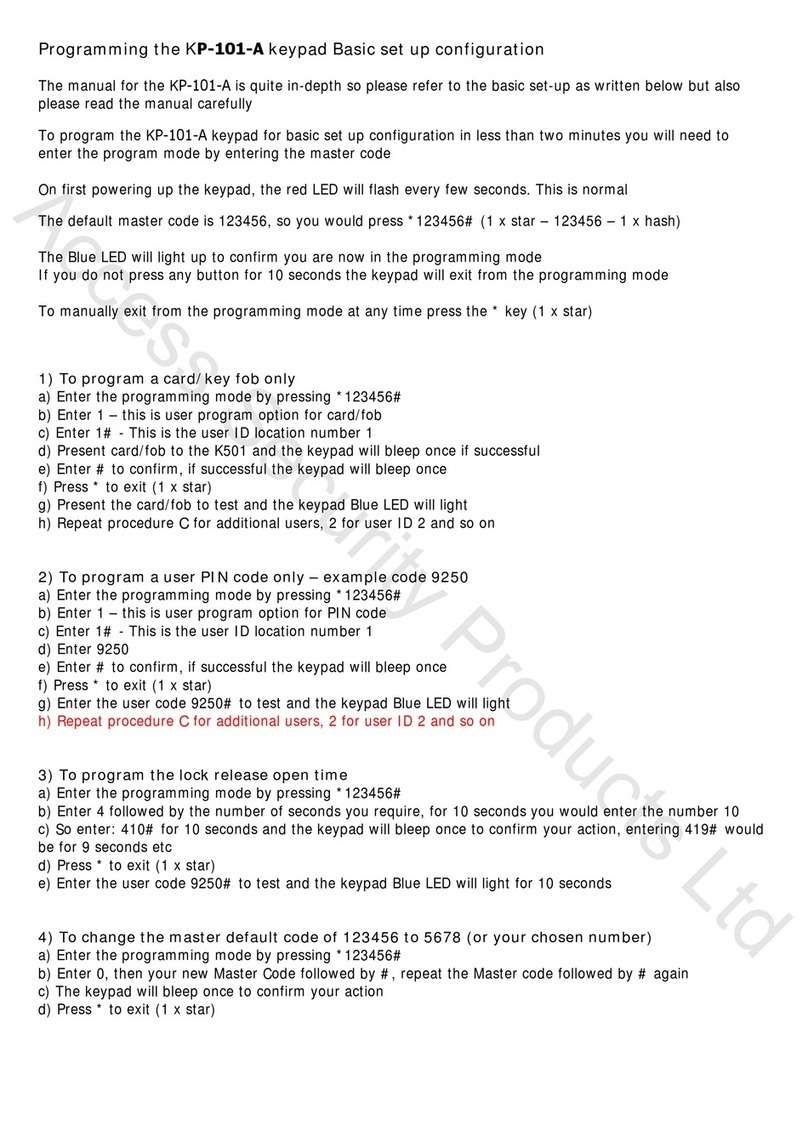
Access Security Products
Access Security Products KP-101-A programming
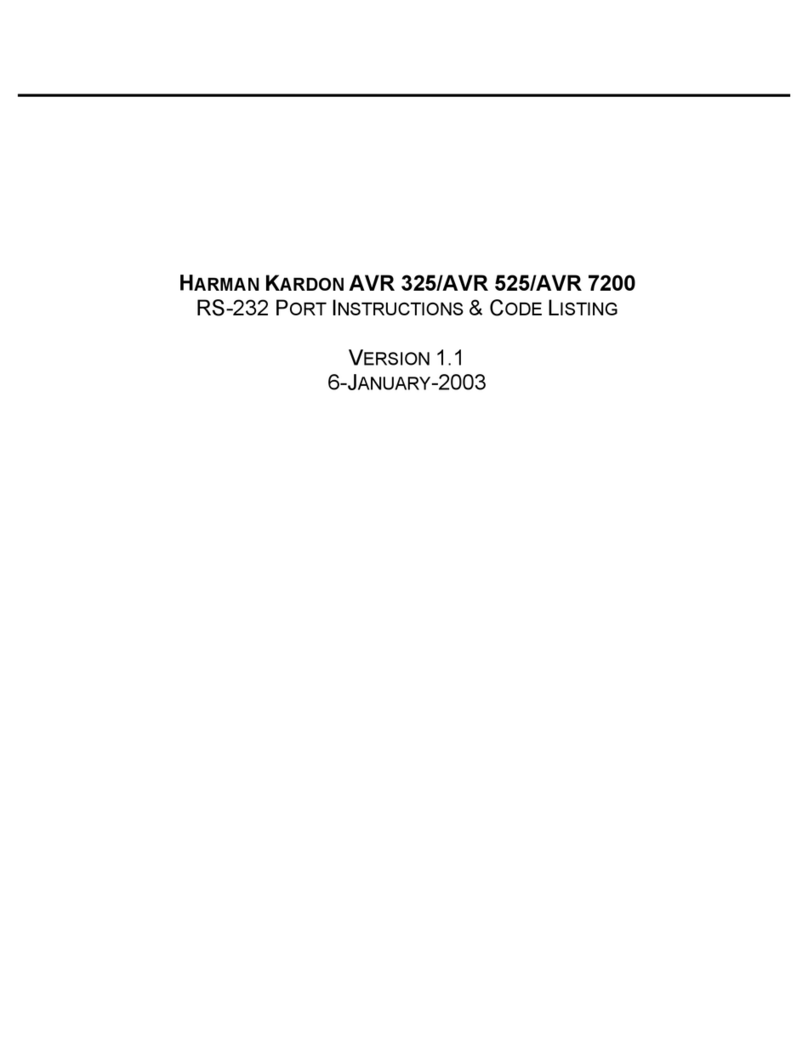
Harman Kardon
Harman Kardon AVR 325 instructions
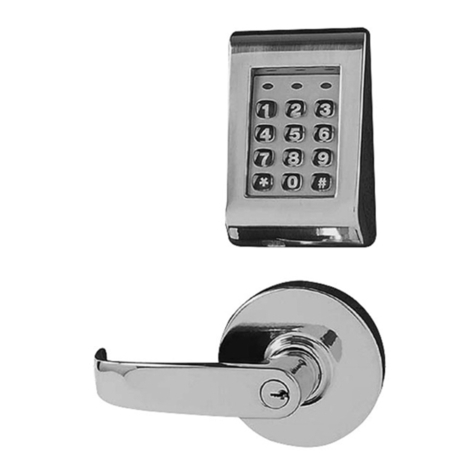
Assa Abloy
Assa Abloy KP10G77 installation instructions
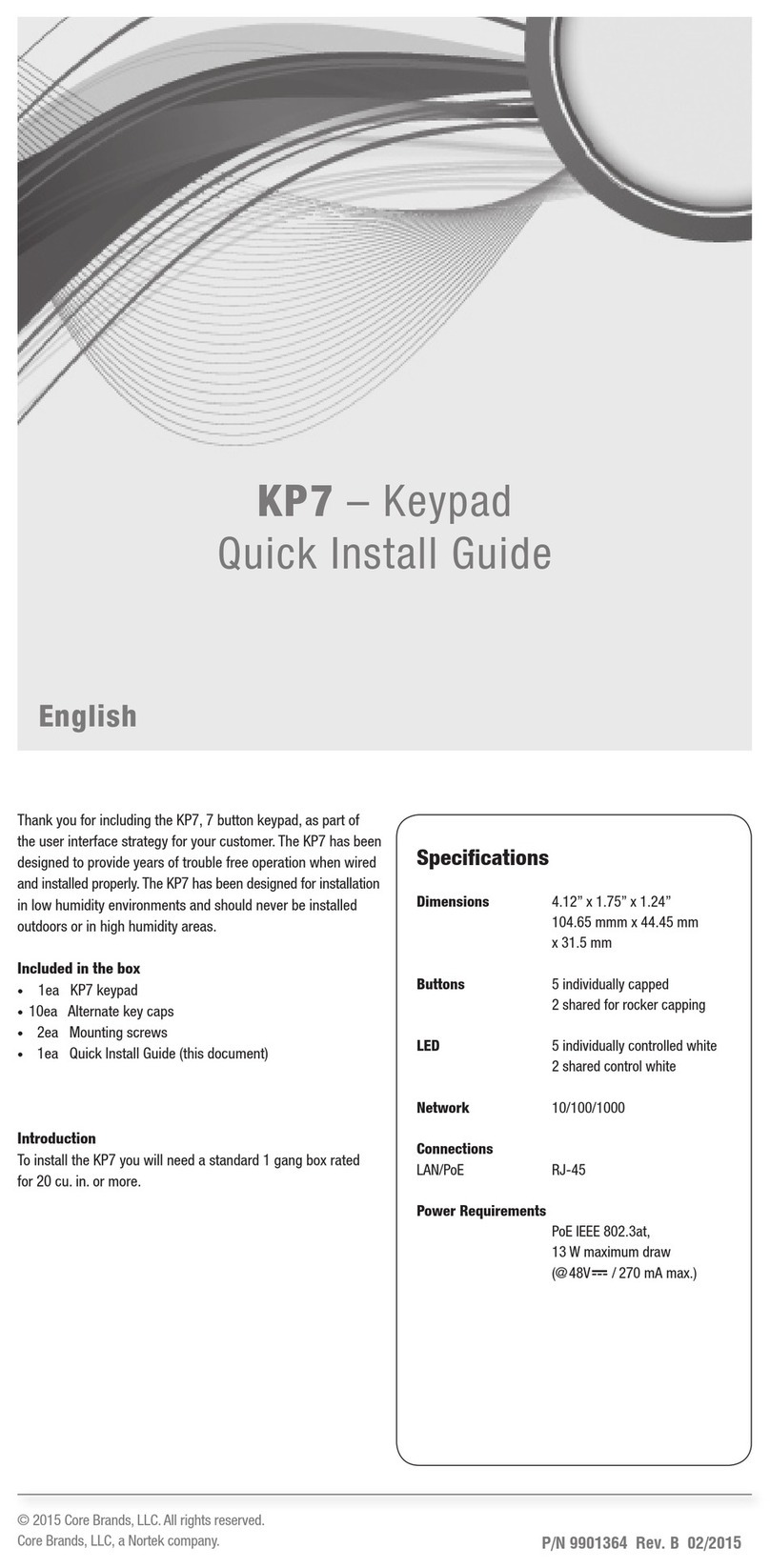
Core Brands
Core Brands KP7 Quick install guide
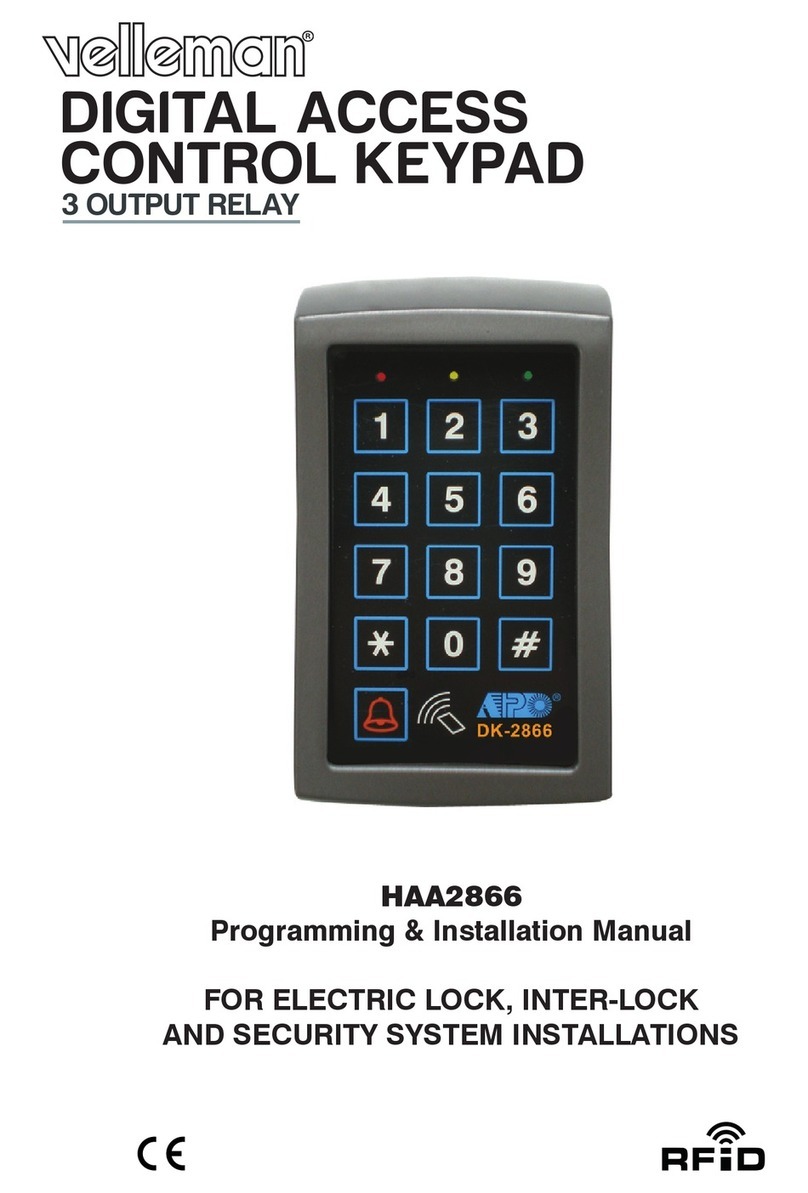
Velleman
Velleman HAA2866 Programming & installation manual
